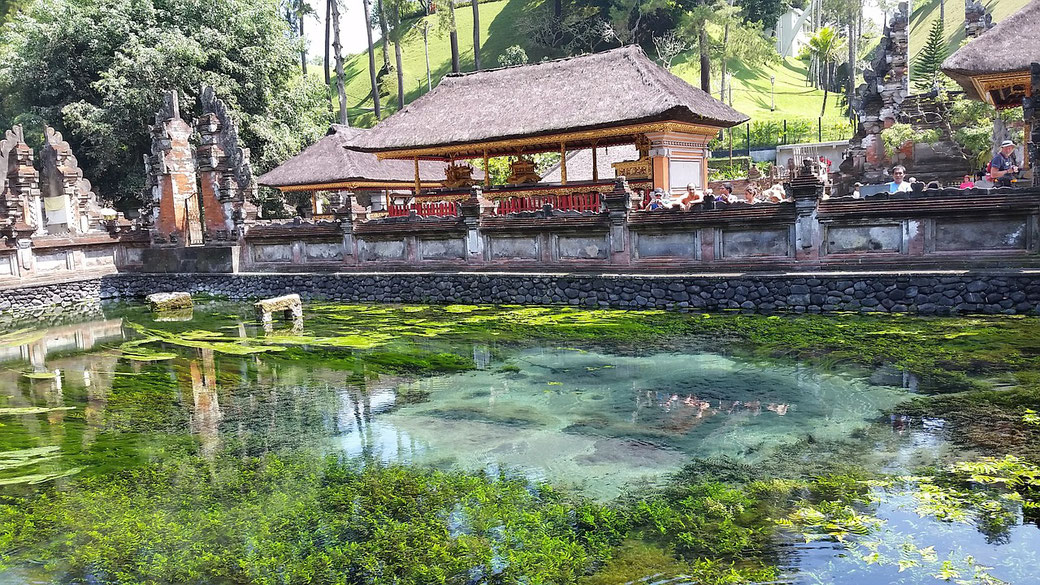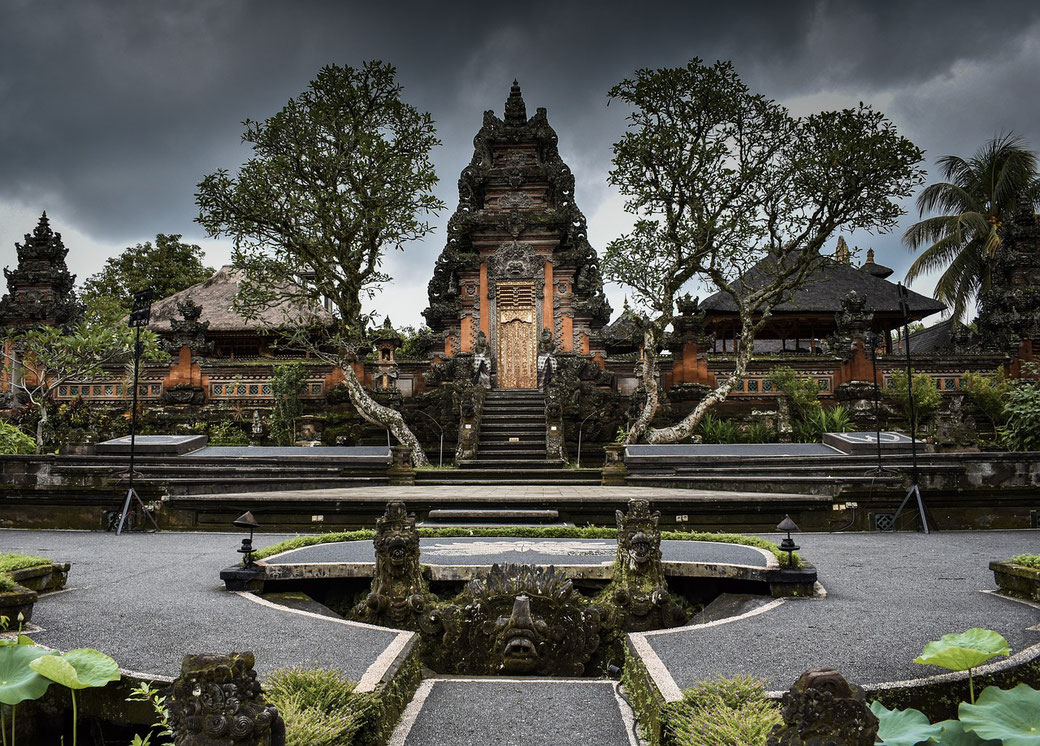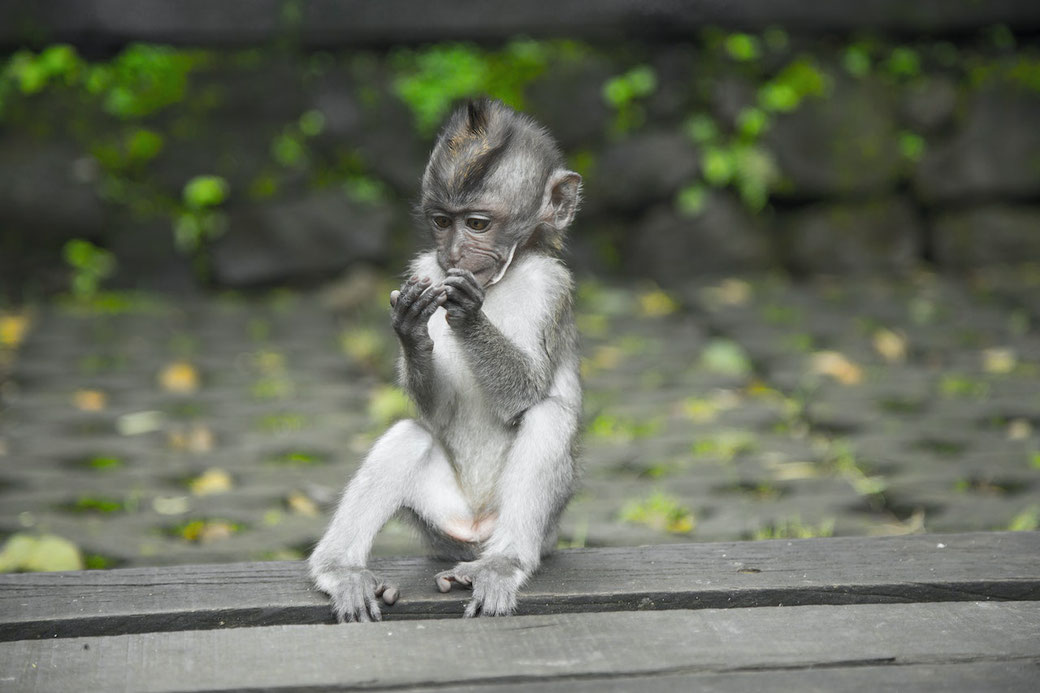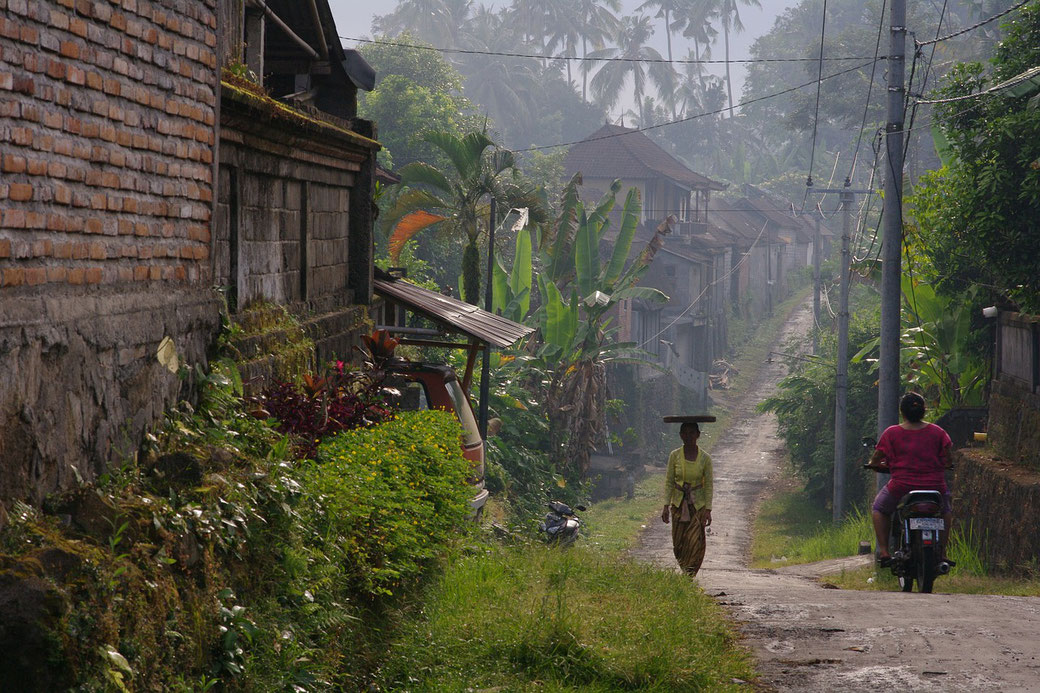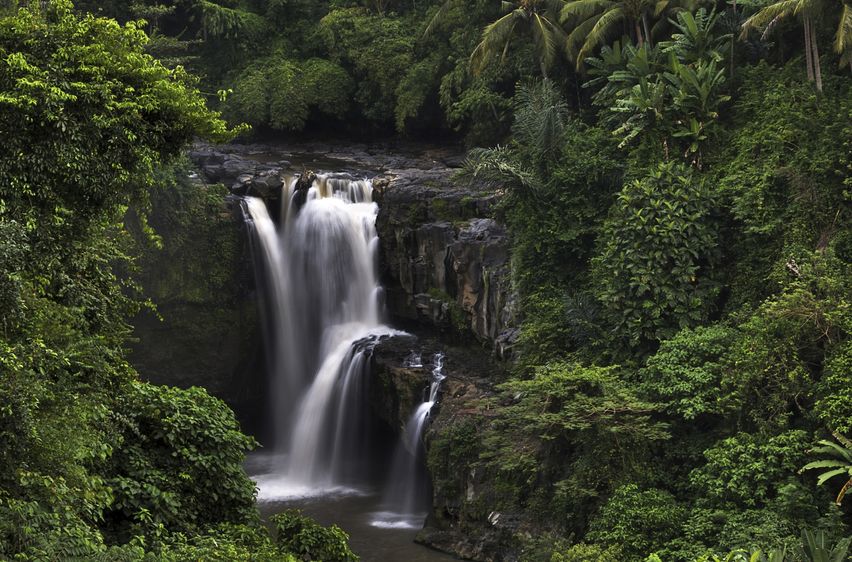gianyar
Gianyar is situated in the central part of the island of Bali and covers an area of approximately 368 square kilometers. Gianyar is known for its rich cultural heritage, stunning landscapes, and traditional arts and crafts.
Cultural Heritage: Gianyar is renowned for its deep-rooted cultural traditions. The regency is home to many important temples and historical sites, including Goa Gajah (Elephant Cave), Tirta Empul Temple, Gunung Kawi Temple, and more. These temples are not only significant religiously but also architecturally fascinating.
Arts and Crafts: The regency is a hub for traditional Balinese arts and crafts. It is famous for its wood carving, stone carving, and silver jewelry making. Visitors can explore art markets and galleries to witness and purchase intricate Balinese handicrafts.
Ubud: Gianyar is also closely associated with Ubud, a cultural center and popular tourist destination in Bali. Ubud is famous for its art scene, traditional dances, and beautiful rice terraces. The Ubud Monkey Forest is another well-known attraction in this area.
Rice Terraces: Gianyar boasts some of Bali's most picturesque rice terraces, especially in the Tegalalang area. These terraces offer breathtaking panoramic views and are an essential part of Bali's scenic landscape.
Tegallalang Rice Terraces: Tegallalang Rice Terraces are a popular tourist spot in Gianyar, known for their lush green fields and stunning terraced landscapes. They showcase traditional Balinese irrigation systems and are a popular location for photography.
Traditional Performances: Gianyar is a great place to experience traditional Balinese performances, such as the Kecak dance, Barong dance, and Legong dance. These performances often take place in temples, cultural centers, and even hotels and resorts.
Cuisine: The regency offers a wide range of delicious Balinese cuisine. Visitors can enjoy various local dishes, including babi guling (suckling pig), bebek betutu (slow-cooked duck), and lawar (a traditional mix containing meat, coconut, and vegetables).
History
The history of Gianyar Regency is closely tied to the history of Bali, as it is one of the regencies on the island. Bali's history dates back to ancient times, and it has been influenced by various cultures, including Indian, Chinese, and Javanese, which have contributed to the unique Balinese culture that we see today.
One of the significant historical aspects of Gianyar is its association with the Kingdom of Gelgel. In the 16th century, the Gelgel Kingdom emerged as a powerful state that unified several principalities in Bali. The kingdom's influence extended to the Gianyar area, and the capital of the kingdom was located nearby. It was during this period that many temples and cultural landmarks were built in the region.
In the 19th century, the Gelgel Kingdom declined, and its power was replaced by the Klungkung Kingdom. The Klungkung Kingdom continued to exert influence over Gianyar, and it was known for its rich cultural and artistic heritage.
During the colonial era, the Dutch East India Company (VOC) arrived in Bali and sought to establish control over the island. Bali fiercely resisted Dutch colonization, and a series of battles took place in various parts of the island, including Gianyar. The Balinese people displayed remarkable resistance against the Dutch forces, making their conquest of the island a difficult and protracted process.
After Indonesia gained independence in 1945, Gianyar became part of the Republic of Indonesia and was designated as one of the regencies within the province of Bali. Today, Gianyar is known for its cultural heritage, art, and traditional crafts. It is home to several popular tourist destinations, including the ancient temples of Goa Gajah (Elephant Cave), Gunung Kawi, and Pura Kehen.
ubud
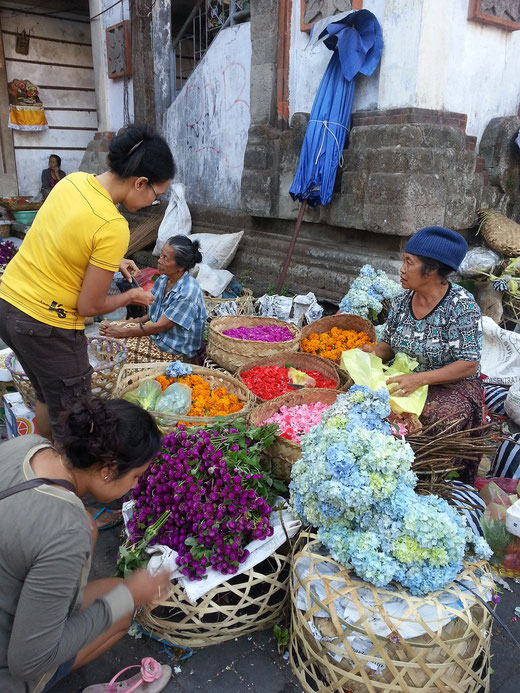
Ubud is renowned for its scenic landscapes, lush rice paddies, traditional art, culture, and spirituality.
Cultural Hub: Ubud has long been considered the cultural heart of Bali. It is home to numerous art galleries, museums, traditional dance performances, and handicraft markets where visitors can immerse themselves in Balinese art and creativity.
Spiritual Center: The town has a significant spiritual vibe and is a popular destination for yoga, meditation, and wellness retreats. Many visitors come here seeking spiritual growth and rejuvenation.
Rice Terraces: The surrounding landscape of Ubud is adorned with stunning rice terraces, particularly in areas like Tegallalang. These terraces provide picturesque scenery and offer a glimpse into Bali's agrarian traditions.
Sacred Monkey Forest Sanctuary: One of the top attractions in Ubud is the Sacred Monkey Forest Sanctuary, a nature reserve home to a large population of long-tailed macaque monkeys. Tourists can observe these playful creatures up close, but they should be cautious with their belongings as the monkeys are known to be mischievous.
Ubud Palace (Puri Saren Agung): The Ubud Palace is a historical landmark and residence of the royal family. It showcases traditional Balinese architecture and often hosts cultural performances and events.
Ubud Market: The Ubud Market is a vibrant place to explore, offering a variety of goods such as textiles, handicrafts, souvenirs, and traditional Balinese artwork.
Ubud's Cuisine: The town boasts a diverse culinary scene, with numerous restaurants and eateries offering both traditional Balinese dishes and international cuisine.
Ubud Writers & Readers Festival: This annual literary event, usually held in October, attracts writers, thinkers, and book lovers from around the world.
Nature and Adventure: Besides its cultural attractions, Ubud also serves as a starting point for various outdoor activities such as trekking, cycling, and exploring the nearby waterfalls and natural beauty of Bali's interior.
puri saren agung

Puri Saren Agung, also known as the Ubud Royal Palace, is a historical and cultural landmark located in the heart of Ubud, Bali, Indonesia.
It holds significant cultural and architectural importance and is a popular tourist attraction in the region.
History: Puri Saren Agung was the residence of the royal family of Ubud until the early 20th century. The palace was built during the 19th century when the Ubud Kingdom was flourishing.
Architecture: The palace showcases traditional Balinese architecture with intricate carvings and decorative elements. Visitors can admire the ornate gates, well-preserved pavilions, and beautiful gardens within the palace complex.
Cultural Performances: Puri Saren Agung is renowned for hosting traditional Balinese dance performances in the evenings. These captivating performances often include the Legong dance and Barong dance, providing visitors with an opportunity to experience the rich cultural heritage of Bali.
Public Access: While parts of the palace are still occupied by the Ubud royal family, certain areas are open to the public for exploration and appreciation. Visitors can enter the outer courtyards and witness the splendid architecture up close.
Ubud Market: The palace is conveniently situated adjacent to the Ubud Market, which is a vibrant marketplace offering a wide array of handicrafts, souvenirs, textiles, and local artwork.
Ubud Palace Festival: The palace occasionally hosts cultural festivals and events that celebrate Balinese traditions and art forms. These events often attract both locals and tourists.
When visiting Puri Saren Agung, it is essential to be respectful of the cultural significance of the place. While parts of the palace are open to the public, remember that it is still a royal residence and an essential symbol of Ubud's cultural heritage.
Pura Taman Saraswati
Pura Taman Saraswati is a beautiful Hindu temple located in the heart of Ubud. It is one of the must-visit cultural and spiritual landmarks in the region and is dedicated to the goddess Saraswati, who is revered as the deity of knowledge, wisdom, arts, and music in Balinese Hinduism.
Architecture: The temple is known for its stunning architecture and design. It boasts intricate stone carvings, lotus ponds, and beautiful Balinese-style gates, which provide a picturesque backdrop for visitors.
Lotus Pond: One of the most captivating features of Pura Taman Saraswati is its lotus pond. The entrance path is lined with water lilies and lotus flowers, which lead to the main temple building.
Cultural Performances: The temple is also renowned for its traditional Balinese dance performances that take place in the evenings. These performances often showcase the rich cultural heritage and artistic traditions of Bali.
Accessibility: Pura Taman Saraswati is conveniently situated in the center of Ubud, making it easily accessible to tourists and visitors. It's a short walk from the main road and is surrounded by various shops, restaurants, and art galleries.
Dress Code: As with most Hindu temples in Bali, visitors are expected to dress respectfully. It is recommended to wear traditional temple attire, which typically includes a sarong around the waist and a sash around the shoulders. Sarongs and sashes are often available for rent or loan at the temple entrance.
Ceremony and Festivals: Various ceremonies and festivals are held at Pura Taman Saraswati throughout the year, attracting both locals and tourists. These events offer a unique opportunity to experience the vibrant culture and religious practices of the Balinese people.
monkey forest
The Monkey Forest, also known as the Sacred Monkey Forest Sanctuary, is a popular tourist attraction located in the heart of Ubud, Bali, Indonesia. It is a nature reserve and Hindu temple complex that is home to a large population of long-tailed macaques (Macaca fascicularis). The sanctuary covers approximately 27 acres and provides a lush and serene environment for both visitors and the resident monkeys.
Hindu Temples: Within the sanctuary, you'll find several ancient Hindu temples, the most notable of which is the Pura Dalem Agung Padangtegal. These temples hold religious significance for the local community and are often adorned with traditional Balinese architecture and intricate stone carvings.
Natural Beauty: The Monkey Forest is set amidst a dense jungle with ancient trees, moss-covered stones, and winding pathways. The environment is rich in biodiversity, making it a beautiful and peaceful place to explore.
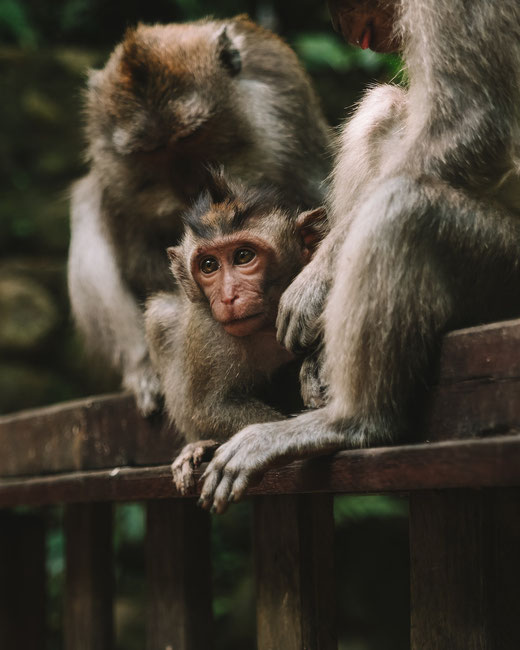
Macaque Monkeys: The sanctuary is home to hundreds of long-tailed macaques, which are considered sacred by the Balinese people. Visitors have the opportunity to observe and interact with the monkeys at close range. However, it's essential to exercise caution and follow the rules as the monkeys are wild animals and may exhibit unpredictable behavior.
Monkey Interactions: Visitors can purchase bananas or other fruits from vendors to feed the monkeys, creating a unique experience for tourists. However, it's crucial to be cautious while doing so, as the monkeys can be mischievous and may attempt to snatch belongings or food from unsuspecting visitors.
Conservation and Research: The Monkey Forest is not just a tourist attraction; it also plays an important role in macaque conservation and research. The sanctuary's management is committed to preserving the natural habitat of the monkeys and raising awareness about their protection.
Cultural Experience: Besides the natural and wildlife aspects, the Monkey Forest offers visitors a chance to experience Balinese culture and spirituality. The temples and surrounding areas are often used for religious ceremonies and traditional rituals.
When visiting the Monkey Forest, it's essential to respect the rules and guidelines provided by the sanctuary's management. This includes not feeding the monkeys any outside food, avoiding direct eye contact with them (as it can be perceived as a threat), and refraining from touching them. Also, be mindful of your belongings, as the monkeys may be curious and attempt to grab loose items.
Overall, the Monkey Forest in Ubud is a unique and fascinating destination that offers a blend of nature, culture, and wildlife experiences, making it a must-visit attraction for travelers to Bali.
Campuhan trail
The Campuhan Ridge Walk, also known as the Campuhan Trail, is a popular and scenic trek in Ubud, Bali, Indonesia. It is a relatively easy and enjoyable hike that offers breathtaking views of the lush greenery, rice paddies, and tropical landscapes of the surrounding area.
Location: The trail is located in the town of Ubud, which is considered the cultural heart of Bali. It begins at the Campuhan Bridge, near the Pura Gunung Lebah temple, and winds through the picturesque Campuhan Ridge.
Length and Difficulty: The trail is approximately 2 kilometers (1.2 miles) long and is considered to be a relatively easy hike suitable for people of all ages and fitness levels. It involves some gentle slopes and uneven terrain, but it's not overly challenging.
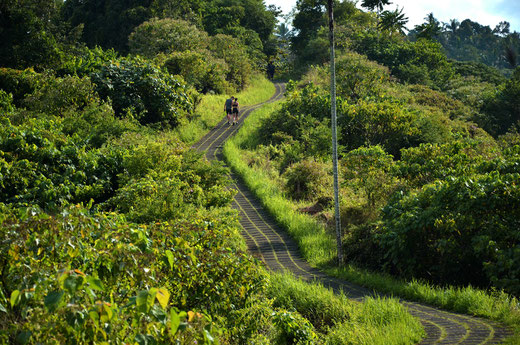
Scenic Beauty: One of the main attractions of the Campuhan Ridge Walk is the stunning natural beauty that surrounds you along the way. You'll pass through emerald-green rice terraces, coconut trees, and vibrant tropical vegetation. The panoramic views of the Ayung River valley and the lush hills of Ubud make it a favorite spot for nature enthusiasts and photographers.
Best Time to Visit: Early morning or late afternoon is the best time to visit the Campuhan Ridge Walk. During these times, the temperature is more pleasant, and you can enjoy stunning sunrise or sunset views from the ridge.
Cultural Significance: The word "Campuhan" in Balinese means "where two rivers meet." This area holds cultural significance as it is believed to be a sacred place where two rivers, the Wos and Oos rivers, merge. Locals consider the spot near the Campuhan Bridge to be spiritually important.
Yoga and Wellness: The Campuhan Ridge Walk is not only a trekking destination but also a hub for wellness and yoga enthusiasts. Along the ridge, you'll find several yoga studios and wellness centers offering classes and workshops.
Accessibility: The starting point of the trail is easily accessible from the center of Ubud, and you can reach it by walking or taking a short taxi ride. As the trail is well-known, locals can easily guide you to the starting point.
Entrance Fee: There is no entrance fee to access the Campuhan Ridge Walk. It's free for all visitors.
Bring Essentials: Even though it's a short and easy hike, it's advisable to wear comfortable shoes and bring some water, especially if you plan to walk during the hotter parts of the day.
Overall, the Campuhan Ridge Walk provides a refreshing escape from the bustling streets of Ubud and is a must-visit destination for nature lovers and those seeking a serene and scenic experience in Bali.
goa gajah
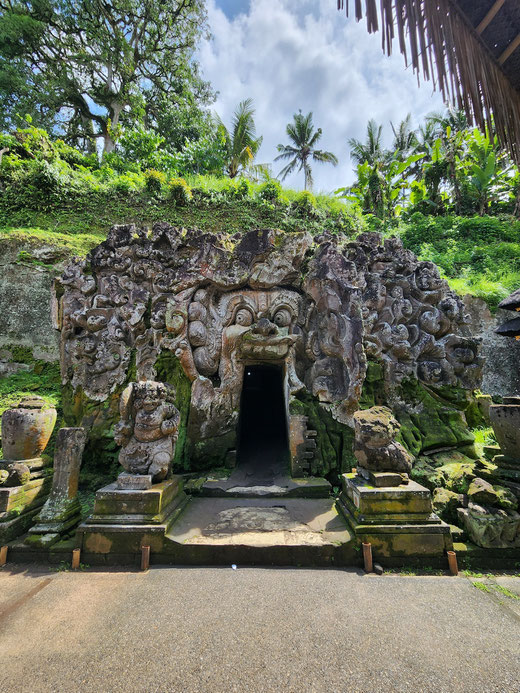
Goa Gajah, also known as the Elephant Cave, is an ancient archaeological site located near Ubud, a popular tourist destination in Bali, Indonesia. It is a significant historical and cultural landmark on the island and attracts many visitors each year.
Origin: Goa Gajah is believed to date back to the 11th century, making it over a thousand years old. It was likely built as a sanctuary for meditation and spiritual practices.
Name: The name "Goa Gajah" translates to "Elephant Cave" in Indonesian. However, it's important to note that there are no actual elephants in the cave or any connection to elephants. The name is derived from the statue of Ganesha, an elephant-headed Hindu deity, located at the entrance.
Hindu Heritage: The site is a mix of Hindu and Buddhist influences, reflecting the syncretism of religions during that period. The cave features several Hindu and Buddhist stone carvings and relics, making it a unique place of historical and religious importance.
Architecture: The main attraction of Goa Gajah is a cave entrance carved into a rock face. Inside the cave, you can find a T-shaped meditation chamber with a statue of Ganesha and lingam (a symbol of Lord Shiva) as well as some niches that once held lingam and yoni symbols. The outside of the cave is adorned with intricate carvings and rock-wall relief that showcase various mythological creatures and figures.
Surrounding Area: Apart from the cave itself, the site includes beautiful gardens, fountains, and bathing pools. These features contribute to the serene and peaceful ambiance of the place.
Importance: Goa Gajah is considered a sacred site and was added to the UNESCO World Heritage Tentative List in 1995. It holds significance for both religious and historical reasons, attracting locals and tourists alike.
Dress Code: As it is a religious site, visitors are required to dress modestly. Sarongs and sashes are provided at the entrance for those who are not appropriately dressed.
If you plan to visit Goa Gajah, it's a good idea to check the latest information and guidelines, especially regarding opening hours and entry requirements, as they may be subject to change. The site is relatively close to Ubud, making it easily accessible for travelers exploring the region.
tegallalang
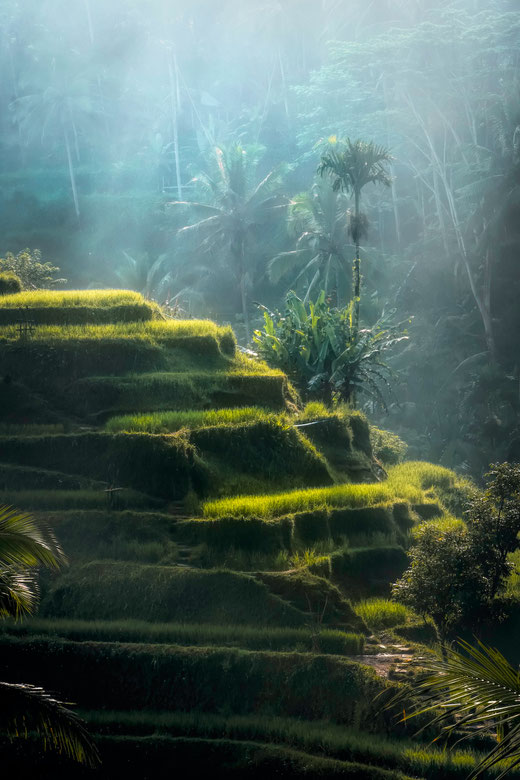
The Tegallalang rice terraces are a famous tourist attraction located in the village of Tegallalang, about 10 kilometers north of Ubud, Bali, Indonesia.
The rice terraces are known for their stunning beauty and unique agricultural design, attracting visitors from all over the world.
Subak System: The rice terraces are part of the traditional Subak system, an ancient irrigation system dating back to the 9th century. This system is designed to efficiently manage the distribution of water from the river to the rice paddies, ensuring the optimal growth of rice.
Scenic Landscape: The terraces are arranged in a series of cascading steps, forming a picturesque landscape that is both beautiful and functional. The lush greenery of the rice paddies against the surrounding coconut trees and jungle creates a stunning natural setting.
Cultural Significance: The Subak system and the rice terraces are not only a practical method of rice cultivation but also carry cultural and spiritual significance for the local Balinese community. They are considered a manifestation of the Tri Hita Karana philosophy, which emphasizes the harmonious relationship between humans, nature, and the spiritual world.
Tourism: Due to their scenic beauty and cultural importance, the Tegallalang rice terraces have become a popular tourist destination in Bali. Many visitors come here to take in the views, walk along the paths between the terraces, and learn about traditional rice cultivation methods.
Souvenir Stalls: Along the main road near the rice terraces, you'll find various souvenir stalls and shops selling local handicrafts, artwork, clothing, and other goods. It's a popular spot for tourists to purchase keepsakes and gifts.
Gunung Kawi
Gunung Kawi is a significant historical and archaeological site located near Ubud. Gunung Kawi, also known as the Gunung Kawi Temple, is an ancient complex that dates back to the 11th century. It is one of Bali's most iconic and unique attractions, attracting both tourists and locals alike.
Location: Gunung Kawi is situated in the Tampaksiring region, approximately 10 kilometers (about 6 miles) northeast of Ubud, in central Bali.
Architecture and Layout: The site comprises ten rock-cut shrines, or candi, which are hewn into the face of a steep rock cliff. These majestic shrines, standing around 7 meters (23 feet) in height, are believed to be memorials dedicated to Balinese royalty. There are four shrines on the west side of the river and five on the east side, with the tenth shrine located across the Pakerisan River.
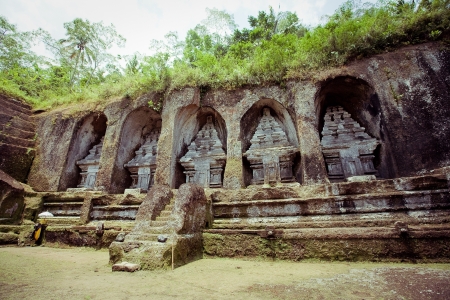
Historical Significance: Gunung Kawi has historical and cultural significance for the Balinese people. It is believed to be a memorial complex built to honor King Anak Wungsu and his queens. However, some aspects of its history and purpose remain shrouded in mystery.
Landscape: The site is surrounded by lush rice terraces and picturesque greenery, providing visitors with a stunning backdrop and a serene atmosphere.
Visiting the Temple: To reach the temple, visitors must descend down a long flight of stone steps, which makes the journey to the complex quite adventurous. The entrance fee is required to visit the temple, and appropriate attire is essential as it is a sacred site.
Spiritual Significance: Gunung Kawi is a site of religious significance for the Balinese people, and it is still actively used for prayers and ceremonies by locals. As a visitor, it is essential to respect the sacredness of the site and adhere to any rules or guidelines provided by the temple authorities.
tirta empul
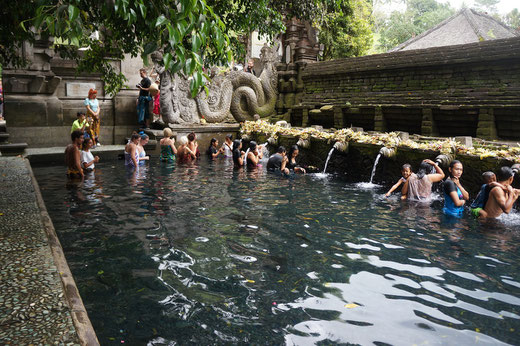
Tirta Empul is a sacred water temple located near the town of Ubud in Bali, Indonesia. It is one of the island's most significant and revered religious sites. The temple is renowned for its natural spring water, which is believed to have curative and purifying properties.
Purification Rituals: The main attraction of Tirta Empul is the purification ritual performed by locals and visitors alike. The ritual involves bathing in the holy water fountains to cleanse the body and soul from negative energies and impurities. Each fountain has its specific purpose, and participants usually follow a specific order during the ritual.
Historical and Cultural Significance: Tirta Empul dates back to the 10th century during the reign of the Balinese king, Mayadenawa.

According to Balinese legend, the sacred spring emerged when the god Indra pierced the earth to create a source of healing water for his forces. The temple's rich history and cultural importance make it a place of spiritual significance for Balinese Hindus.
Temple Complex: The temple complex features beautiful traditional Balinese architecture, with various courtyards, shrines, pavilions, and bathing pools. The main courtyard is spacious and well-maintained, with lush gardens and statues adorning the area.
Visitors' Attire: When visiting Tirta Empul, it's essential to dress respectfully. Proper attire typically includes a sarong and a sash, which can be rented or borrowed at the temple entrance.
Festivals and Celebrations: Tirta Empul hosts several religious festivals throughout the year, which draw large crowds of both locals and tourists. These festivals are vibrant and colorful, offering a glimpse into Balinese Hindu culture and traditions.
Location: Tirta Empul is situated in the village of Tampaksiring, about 15 kilometers (approximately 9 miles) northeast of Ubud. The temple's location in the lush Ubud countryside adds to its serene and tranquil atmosphere.
Tourist Information: The temple is open to visitors daily. As it is a significant spiritual site, it is recommended to be respectful and mindful of local customs and traditions while visiting.
Pura Gunung Kawi Sebatu
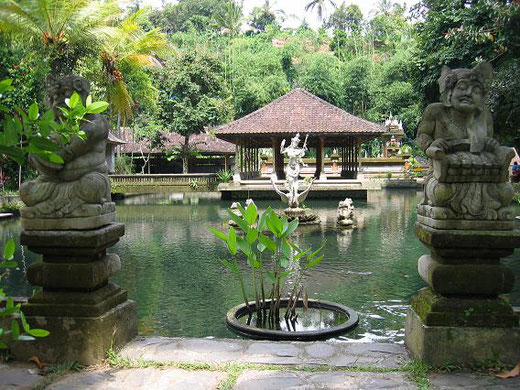
Pura Gunung Kawi Sebatu is a Hindu water temple located in the village of Sebatu. It is a serene and beautiful temple complex that attracts visitors for its tranquil atmosphere, lush surroundings, and unique architectural features.
Temple Complex: The temple complex is nestled in a lush valley and surrounded by rice paddies, creating a picturesque setting. The primary structure of the temple consists of several traditional Balinese pavilions (bale) and shrines.
Holy Spring: The main highlight of Pura Gunung Kawi Sebatu is its holy spring. The temple is built around a natural spring that feeds into several fountains and pools. The spring water is considered sacred and is used for religious ceremonies and rituals by the local community.
Saraswati Fountain Sculpture: One of the notable features of Pura Gunung Kawi Sebatu is the beautiful Saraswati Fountain Sculpture.
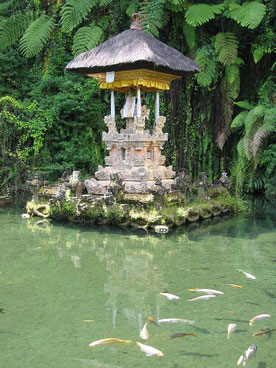
Saraswati is the Hindu goddess of knowledge, art, and wisdom.
The sculpture typically depicts Saraswati sitting on a lotus flower, holding a book, and playing a musical instrument (veena). The fountain represents the purification and cleansing of the mind and soul through knowledge and wisdom.
Rituals and Ceremonies: Pura Gunung Kawi Sebatu is an active religious site where regular Hindu ceremonies and rituals take place. Visitors might have the opportunity to witness or participate in these ceremonies, offering a unique cultural experience.
Dress Code: Like many temples in Bali, visitors are required to adhere to a dress code when entering Pura Gunung Kawi Sebatu. It is customary to wear a sarong and a sash, and sometimes a temple scarf (selendang), which can usually be rented or borrowed at the entrance.
Overall, Pura Gunung Kawi Sebatu offers a peaceful and spiritual experience for those looking to explore Bali's rich cultural heritage and Hindu traditions. If you plan to visit, it is recommended to check the current guidelines and timings for visitors, as they may vary due to religious activities and local regulations.
Batubulan
Stone carvings lineup along the road, many are made on the premises. However a few are also carved elsewhere. Many types of Balinese dances including trance dances are performed here for tourists.
Blahbatuh
Gaduh Temple houses the ancient, folklore, stone head of Kebo Iwa, a Balinese hero of the Majahapit era.
Bedulu
This village houses the museum of archaeology, which exhibits pre-Hindu artifacts, stone carving, old Chinese porcelain and finally the Samuan Tiga Temple, which stages an eleven day ceremony during the 10th full moon according to the Balinese calendar.
Pejeng
Pejeng is home to the temple of Penataran Sasih or Temple of the Moon. It contains the famous bronze Moon Drum, said to be over 2000 years old.
It is the largest, single cast, bronze drum in the world. Good examples of the 13th and 14th century stone carvings can be found at the nearby Pusering Jagat and Kebo Edan temples.
Bona
A village dedicated to producing bamboo products. Said to be the place where the Kecak dance originated.
Yeh Pulu
Close to the Elephant Cave are some 14th century bathing pools with interesting carvings.
Celuk
Celuk is a traditional village located approximately 5 kilometers south of Ubud. The village is renowned for its long-standing history of silver and gold craftsmanship. The local artisans in Celuk have been practicing their skills for generations, and the village has earned a reputation as a major center for jewelry-making and metalwork.
Tourists often visit Celuk to witness the talented craftsmen at work and to purchase intricately designed jewelry and decorative items. The village's narrow streets are lined with numerous workshops and galleries showcasing a wide variety of handcrafted pieces, including rings, earrings, bracelets, necklaces, and more.
The artisans in Celuk are known for their attention to detail and high-quality craftsmanship, and their work has gained recognition both nationally and internationally. It's a great place to find unique and beautiful jewelry pieces as souvenirs or gifts.
If you visit Celuk, you'll have the opportunity to observe the artisans as they skillfully create their masterpieces, and you may even get a chance to participate in workshops where you can learn the basics of jewelry-making under their guidance.
Mas
Mas is the hometown of some of Bali´s most famous woodcarvers. The studio of Ida Bagus Tilem, master woodcarver, is a showroom of antique and modern woodcarving and he has a permanent exhibition of his own priceless sculptures that are timeless works of art. There are many home studios in the village, where one can watch artisans at work, bringing the specially chosen pieces of wood to life with skillful strokes of the chisel.
Sukawati
Sukawati is renowned for its traditional art market, known as "Sukawati Art Market" or "Pasar Seni Sukawati" in the local language.
Sukawati Art Market: The market is one of the oldest and most famous art markets in Bali. It is a bustling hub for art, handicrafts, and souvenirs, drawing both locals and tourists alike. The market is a great place to experience Bali's artistic heritage and purchase authentic Balinese artwork.
Handicrafts and Artwork: The Sukawati Art Market offers a wide range of Balinese handicrafts, including traditional paintings, wood carvings, batik fabrics, silver jewelry, sculptures, traditional masks, and more. It's an excellent place to shop for unique and authentic Balinese souvenirs.
Bargaining: Bargaining is a common practice at Sukawati Art Market, and vendors often expect customers to haggle over prices. Remember to negotiate politely and be respectful during the process. Bargaining can be a fun and rewarding experience, as you might get a better deal on your purchases.
Authenticity: While the market offers an extensive selection of art and crafts, it's essential to be discerning and ensure the authenticity of the items you intend to buy. Some vendors may sell mass-produced or imported goods, so it's a good idea to look for signs of genuine craftsmanship and support local artisans whenever possible.
Location and Accessibility: The Sukawati Art Market is conveniently situated along the main road of Jalan Raya Sukawati, making it easily accessible by car or motorbike from nearby areas like Ubud and Denpasar. The market is open daily, and it's advisable to visit in the morning or early afternoon when it's less crowded.
Batuan
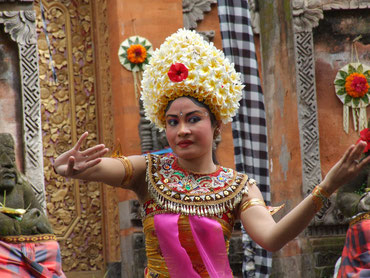
Batuan is known for its dancing and the originality of its painters and wood-panel carvers.
Batuan has long been a famous centre of arts.
There are active Topeng, Legong and Gambuh dance troupes here, and many young foreigners come to Bali to study dance in this village.
The carved wooden friezes are replicas of the detail found in stone temple walls, depicting scenes from the ancient. Mahabharata and Ramayana epics in exquisite detail.
Several of Batuan´s best painters exhibit their work in Ubud´s Puri Lukisan and some have exhibited overseas.
Few artists in Bali are so well traveled as Batuan´s Made Bali.
Teges

This village has two communities, Teges Kanginan, famous for its musicians and dancers, and Teges Kawan, a community of sculptors.
The Teges Kanginan community has a large Seman Pegulingan orchestra, a Kebyar orchestra, a childrens gamelan and a Angklung bamboo ensemble.
Their dancers are the top of the Balinese stage. The original Kecak dance was choreographed in this village.
The wood carvers of Teges Kawan specialize in contemporary ornamental and functional carvings.
They create replicas of trees, plants, flowers, ducks, fishes and fruit that makes interesting pieces of interiors.
Each carving is painted in lifelike colors, so realistic they will confuse the casual observer.
Pengosekan
This village became famous when Queen Elizabeth visited in 1974. Pengosekan has an active community of artists, with a studio near the main road, who work together under the guidance of Dewa Nyoman Batuan, who is himself an accomplished artist. The Pengosekan artists create attractive compositions and scenes from nature in pastel shades that delight the eye. They also have a group who carves furniture, trays, cupboards and other household utensils in shallow relief, to which the artists apply a delicate rendering of color.
Nyuh Kuning
Past Pengosekan the road meanders through the rice fields to the sacred Monkey Forest just South of Ubud, where is a secluded bathing place in a deep ravine bridged by the roots of a huge Banyan tree.
Above the Monkey Forest is a forbidding temple with striking sculptures of the evil witch Rangda, devourer of children, guarding the inner temple.
The village of Nyuh Kuning is close by, yet another community of farmers who sculpt and paint in their spare time, creating statues of birds, frogs, fish and insects, and detailed canvas renderings of nature´s wonders.
Taro
Coffee plantations over the land around Taro and the classics Balinese architecture of the compounds are reminiscent of the Bali of the past.
tegenungan waterfall
Tegenungan Waterfall is a beautiful natural attraction. It is one of the most popular waterfalls on the island and is situated in the village of Tegenungan which is about 10 kilometers south of Ubud, a well-known tourist destination.
Scenic Setting: The waterfall is set amidst lush greenery and tropical vegetation, creating a picturesque backdrop for visitors.
Accessible Location: Due to its proximity to Ubud, Tegenungan Waterfall is easily reachable, making it a popular day trip destination for tourists staying in the region.
Waterflow: The waterfall's water cascades down over a cliff and into a pool below. The intensity of the water flow may vary depending on the season and recent rainfall.
Swimming: Visitors are allowed to swim in the pool beneath the waterfall. However, it's essential to exercise caution as the water flow can be strong at times.
Viewing Points: There are several viewpoints and platforms that allow visitors to capture stunning photos of the waterfall and the surrounding area.
Surrounding Area: Near the waterfall, you can find small shops and stalls selling souvenirs, snacks, and refreshments.
Entrance Fee: As with many tourist attractions in Bali, there is an entrance fee to access the waterfall area.
Sayan
For stunning views the village of Sayan is unsurpassed. The village backs onto ravine that drops far down into a deep valley carved by the Ayung River. Over the past twenty years a number of foreigners have built holiday homes along the ridge, looking out over the spectacular view to the mountains of west Bali in the distance.
Payangan
The village of Payangan, just 12 kilometers past Ubud, is famous for its lychees, durian and pineapples. Just North of Payangan is a village called Tihingan with beautiful bamboo groves. This is a particularly beautiful part of Bali for countryside walks.
Belega & Bona
Belega and Bona both have many bamboo furniture workshops and a large part of their work is for export. In Bona, women and children of all ages make delicate basketry cleverly women and dyed in bright colors.
Taman Nusa Cultural Park
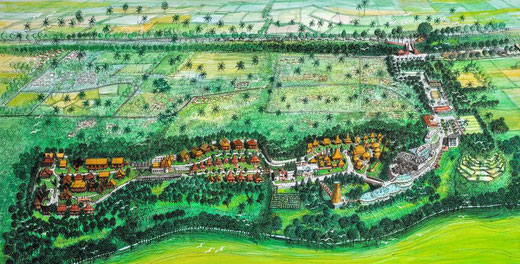
Taman Nusa Cultural Park is a popular cultural attraction. It is a unique open-air museum that aims to showcase the diverse cultural heritage of Indonesia.
Taman Nusa offers visitors a comprehensive and immersive experience of the country's history, traditions, architecture, and arts.
Cultural Zones: Taman Nusa is divided into several zones, each representing different regions of Indonesia. Each zone features authentic and meticulously crafted traditional houses, reflecting the distinct architecture and cultural practices of the respective regions.
Traditional Performances: Visitors to Taman Nusa can enjoy traditional dance performances, music, and cultural shows. These performances often take place in a purpose-built traditional theater within the park.

Artifacts and Exhibits: The park houses a vast collection of cultural artifacts, historical items, traditional costumes, crafts, and artworks, providing insight into Indonesia's rich cultural heritage.
Educational Experience: Taman Nusa is designed to be an educational and informative experience for both tourists and locals. The park aims to preserve and promote Indonesia's diverse cultural heritage.
Beautiful Landscapes: Apart from the cultural exhibits, Taman Nusa is set in a beautiful natural environment with lush gardens, ponds, and well-maintained landscapes, making it a pleasant place to explore.
Culinary Experience: The park often offers traditional Indonesian cuisine, allowing visitors to savor various regional dishes from across the archipelago.
comments
This list is for sure not complete. We welcome your comments and encourage you to share additional touristic, cultural, or historical facts about this regency. Your insights will benefit other readers visiting this page.

